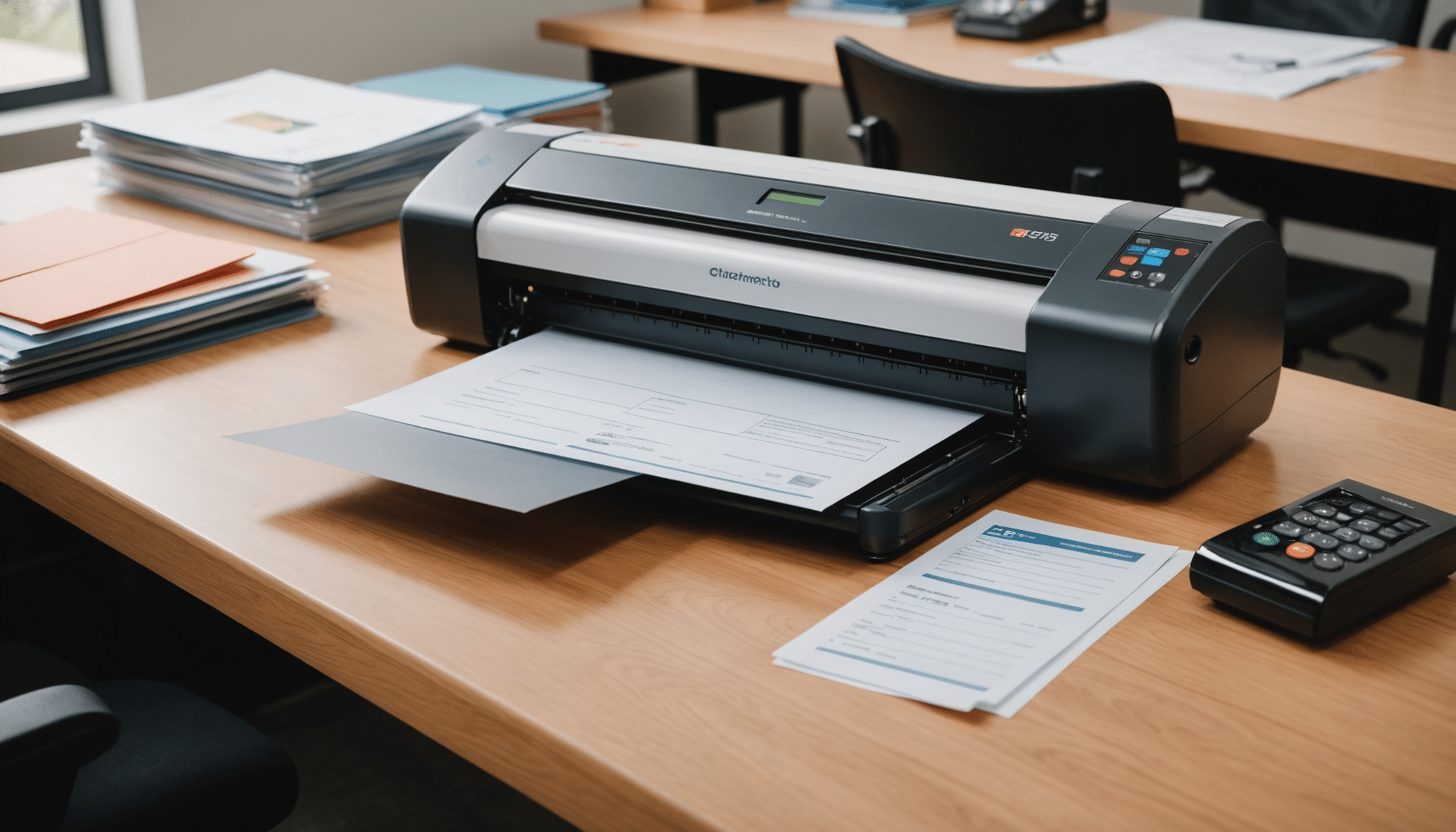
How Does a Laminator Work? Quick Guide to Flawless Lamination
Learn HOW A LAMINATOR WORKS with this SIMPLE guide. Understand the role of HEAT, PRESSURE, and a LAMINATING POUCH for PERFECT results—HOT AND COLD options included.
A laminator is a machine used to seal documents between layers of plastic film, protecting them from damage. Common in schools, offices, and print shops, laminators help preserve paper for long-term use. This article explains how laminators work and what happens during the laminating process in clear, practical steps.
How does a laminator work?
A laminator seals a document between two plastic sheets using heat and pressure. The heated rollers melt the adhesive inside the laminating pouch, bonding it to the paper. This creates a durable, protective coating that resists moisture, fingerprints, and wear, making the document longer-lasting and more professional-looking.
Key Steps in Laminator Operation
- Place your document inside a laminating pouch with sealed edges aligned.
- Preheat the laminator if using a hot lamination setting.
- Insert the pouch sealed-side first into the rollers.
- The heated rollers apply pressure and activate the adhesive.
- The pouch exits with a smooth, sealed finish—no bubbles or wrinkles.
- Allow the laminate to cool before trimming or handling.

How Laminators Work Step-by-Step
A laminator works by sealing a document between layers of plastic using a mix of heat, pressure, and rollers. Most people use a laminating pouch—two connected sheets of laminating film that fold around the paper. As the pouch goes through the machine, the heated rollers press it tightly, melting the adhesive and bonding the plastic to the document.
There are two main types of lamination processes: hot lamination and cold lamination. Hot laminators use heated rollers to activate the adhesive, making them ideal for standard office tasks. Cold laminate, on the other hand, relies on pressure-sensitive adhesive and is better suited for heat-sensitive materials like photographs or classroom displays drawn with crayons.
Most laminators use two rollers, but the number and configuration may vary. Whether you need to laminate an ID card or a poster, the right laminating machine for the job will make a big difference in the result’s quality and durability.

GBC 240 Home Office A4 Laminator 4410068UK 400 mm / min. 2 min warm-up period to 2 x 125 (250) microns.
Types of Laminators Explained
Laminators come in a few different flavours. The most common one is the pouch laminator, which uses pre-sealed laminating pouches to laminate single sheets. These machines are popular because they’re compact, easy to use, and perfect for everyday tasks like preserving ID cards or laminating classroom materials. Just feed the pouch into the machine, and you’re off.
Next up is the roll laminator, which uses rolls of laminating film instead of pouches. This type of laminating machine is often found in print shops or schools that need to laminate large posters, signs, or a never-ending pile of menus. The film feeds continuously, which is efficient, but it does require a bit more know-how—and space on your desk.
Hot and cold laminators are also worth mentioning. Hot laminators offer glossy finishes and strong adhesion, while cold laminators are perfect for materials sensitive to heat. Choosing the right laminator may come down to what you laminate most—if it’s heat-sensitive prints or delicate ink, go cold; if it’s thick card stock or standard paper, hot’s your guy.
Laminator Types and Key Characteristics
| Type | Description | Ideal Use |
|---|---|---|
| Pouch Laminator | Uses sealed laminating pouches for single sheets. | Offices, schools, home use |
| Roll Laminator | Uses continuous rolls of film for larger items. | Print shops, large-format jobs |
| Hot Laminator | Applies heat to activate adhesive in film. | Menus, posters, ID cards |
| Cold Laminator | Uses pressure-sensitive adhesive without heat. | Photos, heat-sensitive documents |
What Happens Inside the Pouch
Once the pouch enters the laminator, the real magic happens. The heated rollers apply a specific temperature and pressure, activating the adhesive layer inside the laminating pouch. This adhesive is usually a type of resin or polyethylene that becomes tacky with heat, allowing it to bond permanently with the document inside.
The heat melts the adhesive just enough to create a strong seal, while the rollers push out any air bubbles, ensuring a smooth, clear finish. This is especially important for items like photographs or important documents, where trapped air or uneven lamination can ruin the look—or legibility. Some laminators also use sensors to adjust pressure for different pouch thickness levels.
The result? A tightly sealed, glossy (or matte, depending on the pouch) laminate that protects the paper from moisture, fingerprints, and wear. This internal process is often overlooked but key to understanding why some lamination jobs last years while others peel after a week. When laminators work well, you can count on your documents staying safe, sharp, and smudge-free.
Conclusion
Understanding how a laminator works can help you make smarter choices, whether you’re preserving documents, protecting signage, or simply aiming for a neater, more professional finish. From heat and rollers to the science inside each pouch, it’s all about precision and protection.
At Viking, we combine workplace know-how with tools that make your daily tasks easier and more efficient. If you need a laminator or laminating supplies that balance performance, cost, and reliability, we’re ready to help you create the ideal setup for your workspace.
Frequently Asked Questions
What is the basic function of a laminator?
A laminator uses heat and pressure to seal a document inside a plastic laminating pouch. The heated rollers melt the adhesive layer, bonding the plastic to the paper. This lamination process protects the document from moisture, dirt, and damage, making it more durable and ideal for frequent handling in classrooms, offices, or presentations.
What’s the difference between hot and cold lamination?
Hot lamination uses heated rollers to activate adhesive in the laminating film, which is ideal for standard materials like card stock or menus. Cold lamination applies pressure only and is better for heat-sensitive items like photographs or inkjet prints. Both methods laminate documents but differ in temperature, adhesive type, and suitability for certain materials.
Can I use any pouch with my laminator?
Not all pouches are compatible with every laminator. You should always match the pouch thickness to what your laminating machine supports, typically measured in microns. Thicker pouches provide more durability but require higher heat. Using the wrong pouch may cause jamming or poor adhesion, especially if your laminator may not support thicker lamination film.
What happens if the rollers are misaligned?
If the rollers inside a laminator are misaligned, the lamination process may result in wrinkled, uneven, or poorly sealed documents. The adhesive might not bond properly, causing bubbles or lifting at the edges. This can damage important documents and waste pouches. Regular maintenance and alignment checks help ensure smooth operation and consistent lamination quality.








